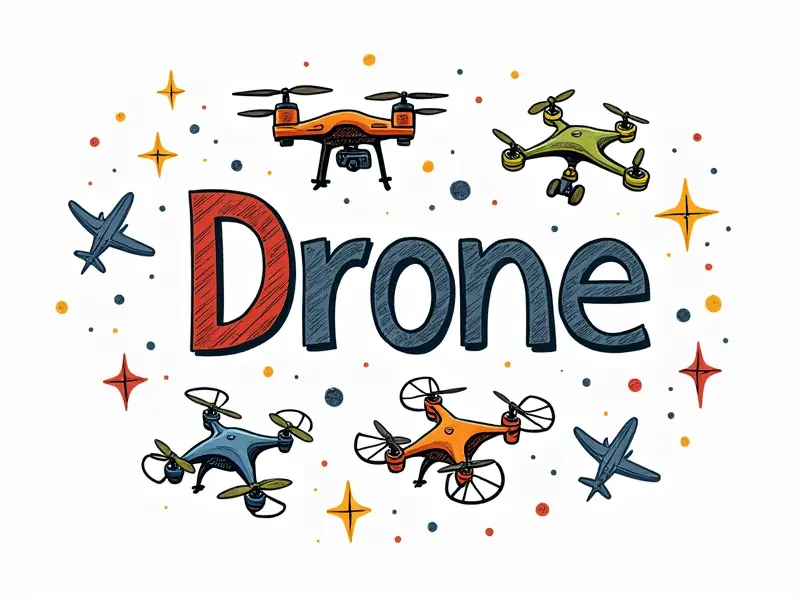How to fly FPV drones?

How to Fly FPV Drones: A Comprehensive Guide
Flying FPV (First Person View) drones is an exhilarating experience that combines the thrill of remote control flying with the immersive perspective of viewing through a live video feed. Whether you're a beginner looking to get started or an experienced pilot aiming to refine your skills, this guide will help you master the art of FPV drone flight.
Mastering FPV Drone Flight Techniques
Mastery in flying FPV drones involves several techniques that enhance control and maneuverability. Key aspects include:
- Straight Line Flying: Keeping your drone on a straight path is crucial for maintaining stability during flight.
- Circle Flight Patterns: Learning to fly in circles helps improve your orientation skills, especially when flying with limited visibility.
- Airborne Maneuvers: Techniques such as rolls and flips can be mastered by practicing smooth transitions between maneuvers.
Beginner's Guide to Flying FPV Drones
If you're new to FPV drones, it’s essential to start with the basics. Here are some tips for beginners:
- Selecting the Right Equipment: Choose a drone that suits your skill level and budget.
- Understanding Flight Controls: Familiarize yourself with how each control input affects the drone's movement.
- Safety First: Always wear protective gear such as goggles, helmets, and gloves to ensure safety during flight.
Essential Skills for FPV Drone Racing
FPV racing requires a combination of technical skills and mental agility. Key competencies include:
- Precision Flying: The ability to navigate through tight spaces without collisions.
- Speed Control: Mastering the balance between speed and maneuverability is crucial for racing success.
- Strategic Planning: Anticipating obstacles and planning ahead can give you an edge in competitive races.
Navigate Like a Pro with FPV Drones
Becoming adept at navigation involves several key strategies:
- Understanding Altitude Control: Managing altitude accurately is vital for flying over or under obstacles.
- Making Quick Decisions: Reacting swiftly to unexpected situations can save your drone from crashes.
- Using GPS and Waypoints: Advanced features like GPS and waypoints enhance navigation capabilities.
FPV Drone Controls: A Comprehensive Guide
Fine-tuning your control skills is essential for smooth FPV flight. Focus on the following aspects:
- Stick Sensitivity Adjustment: Customize your controller settings to match your flying style.
- Throttle Management: Learn to manage throttle effectively for efficient power usage and stability.
- Momentary Control Inputs: Practice making precise, momentary adjustments to fine-tune your flight path.
Secrets to Smooth FPV Drone Navigation
To achieve smooth navigation in FPV mode, consider these tips:
- Regular Practice Sessions: Consistent practice improves muscle memory and reaction time.
- Flight Simulation Training: Use flight simulators to hone your skills without risking real drone damage.
- Analyzing Flight Data: Review data from previous flights to identify areas for improvement.
Navigating with Confidence in FPV Mode
Gaining confidence in FPV mode requires a blend of technical proficiency and mental preparedness:
- Mental Focus: Stay calm and focused during flight to make better decisions.
- Physical Comfort: Ensure your setup is comfortable, allowing you to fly for longer periods without strain.
- Feedback from Others: Seek constructive feedback from experienced pilots to refine your technique.
Perfecting Your FPV Drone Flying Skills
To perfect your flying skills, focus on the following areas:
- Advanced Maneuvers: Challenge yourself with more complex maneuvers as you gain experience.
- Consistent Practice: Regular practice is key to maintaining and improving your skill level.
- Participating in Competitions: Engage in races or challenges to test and enhance your abilities.
Master FPV Flight Techniques Quickly
If you want to accelerate your learning curve, follow these tips:
- Join FPV Communities: Connect with other pilots for advice, support, and camaraderie.
- Watch Tutorial Videos: Learn from experienced pilots through online tutorials and demonstrations.
- Experiment with New Techniques: Don’t be afraid to try out innovative flight methods and see what works best for you.
Essential Skills for FPV Drone Flying
The essential skills every FPV pilot should have include:
- Strong Hand-Eye Coordination: This skill is crucial for translating visual cues into precise control inputs.
- Quick Reflexes: Rapid response times are necessary to avoid obstacles and maintain flight stability.
- Detailed Observation: Paying close attention to your surroundings can prevent accidents and enhance performance.
FPV Drone Setup and Configuration Guide
Proper setup is vital for optimal FPV flying. Follow these steps to configure your drone:
- Calibrate Sensors: Ensure all sensors are properly calibrated for accurate data.
- Tune Control Settings: Adjust stick sensitivity and other settings according to your preferred handling style.
- Test Flight Setup: Conduct a test flight to verify that everything is functioning correctly before venturing out into more challenging environments.
Conclusion
Flying FPV drones offers an exciting and immersive experience, but it requires dedication and practice to master. By following the tips outlined in this guide—from selecting the right equipment to perfecting advanced flight techniques—you can enhance your skills and enjoy a safer, more enjoyable flying experience. Whether you're just starting out or looking to refine your abilities, there's always room for improvement and exploration in the world of FPV drone flying.

